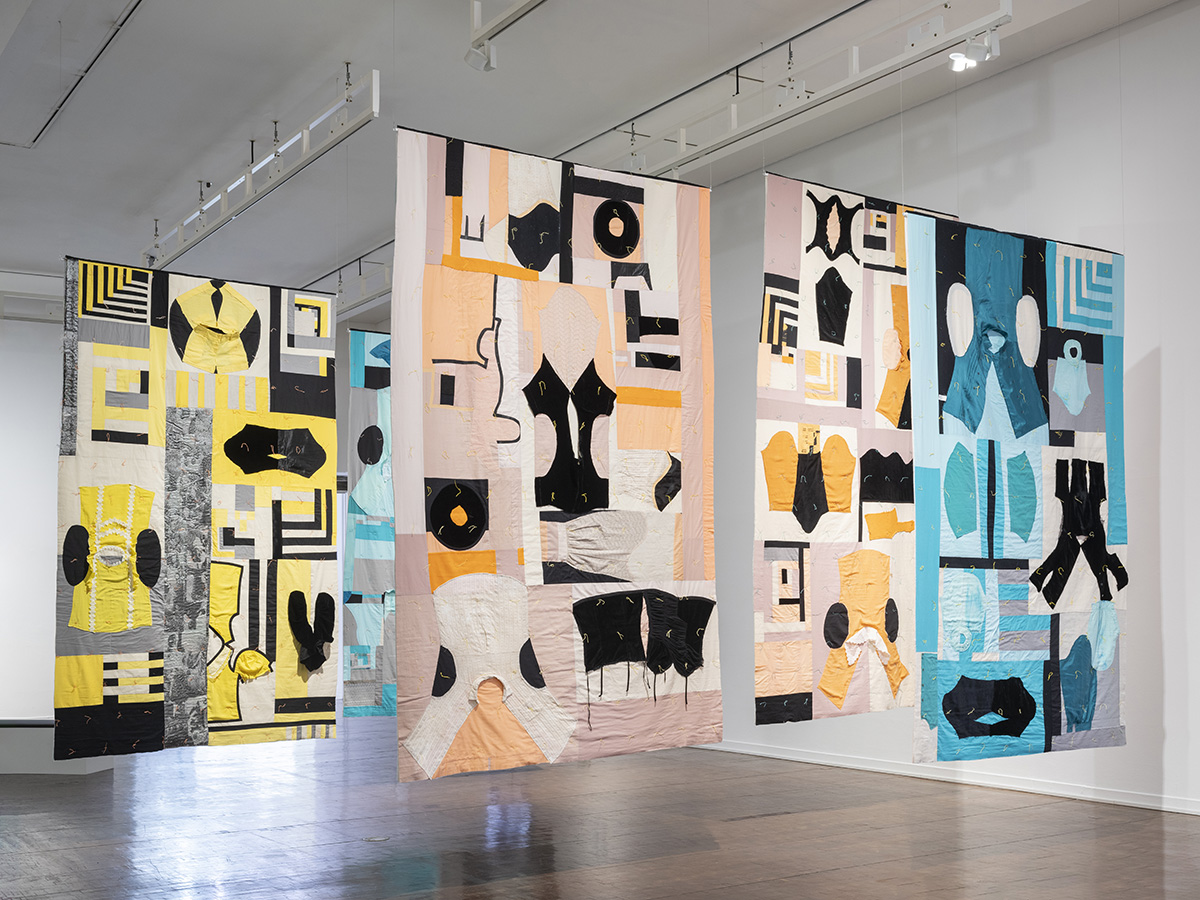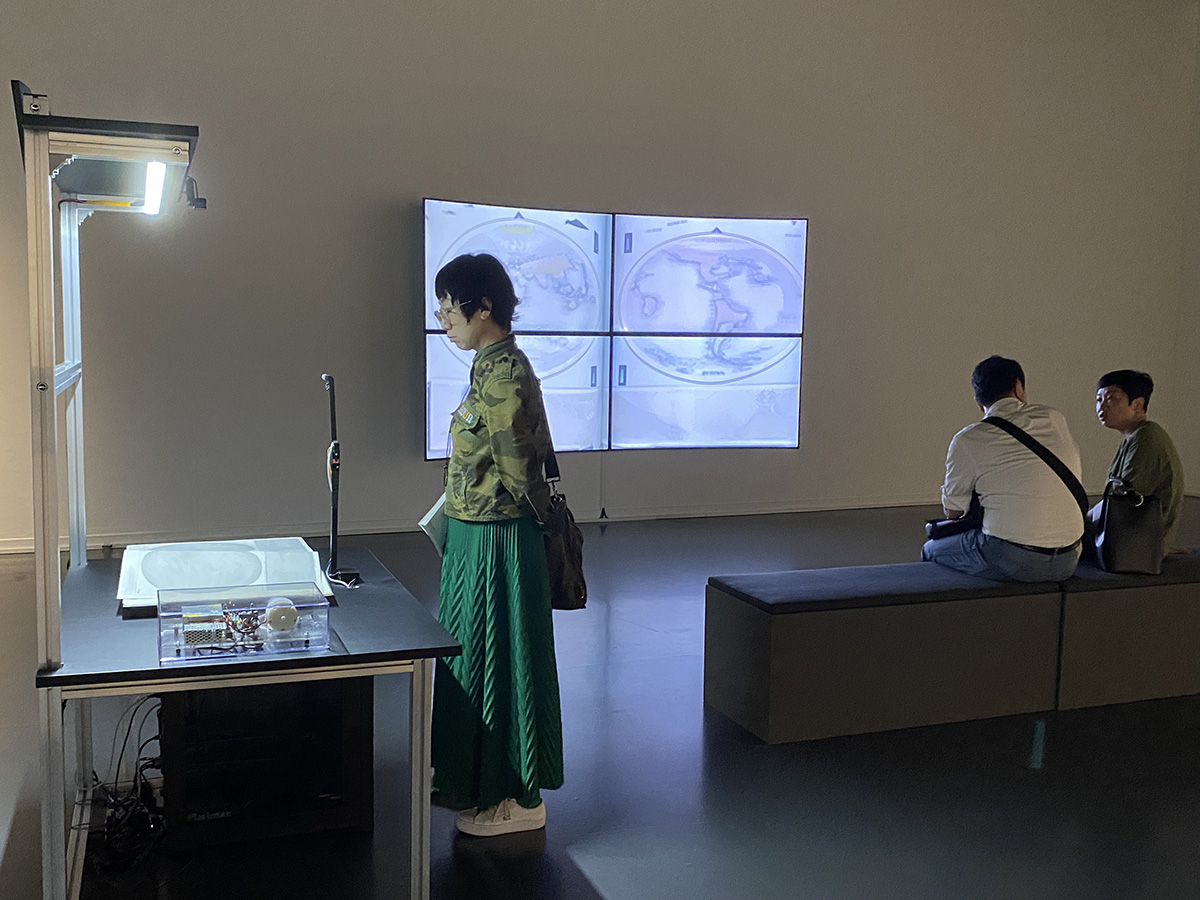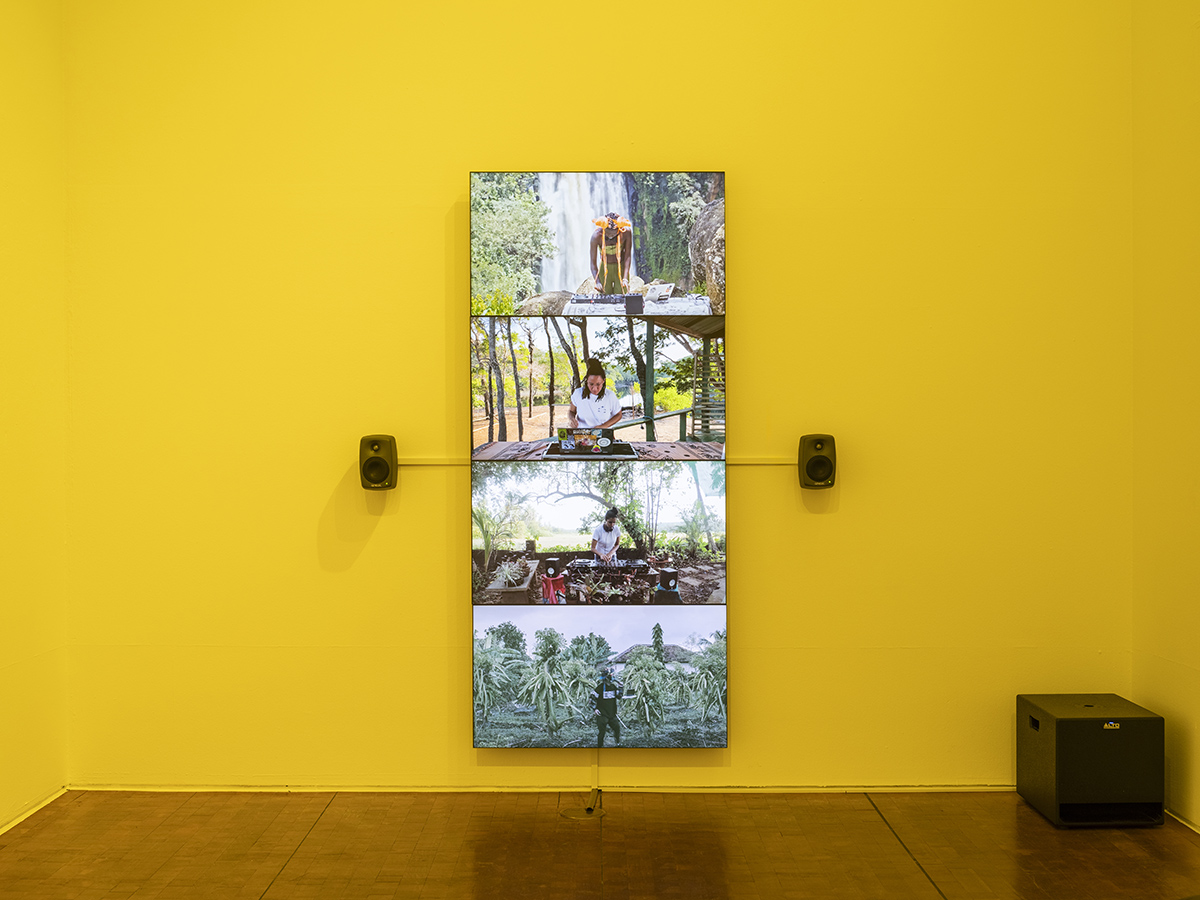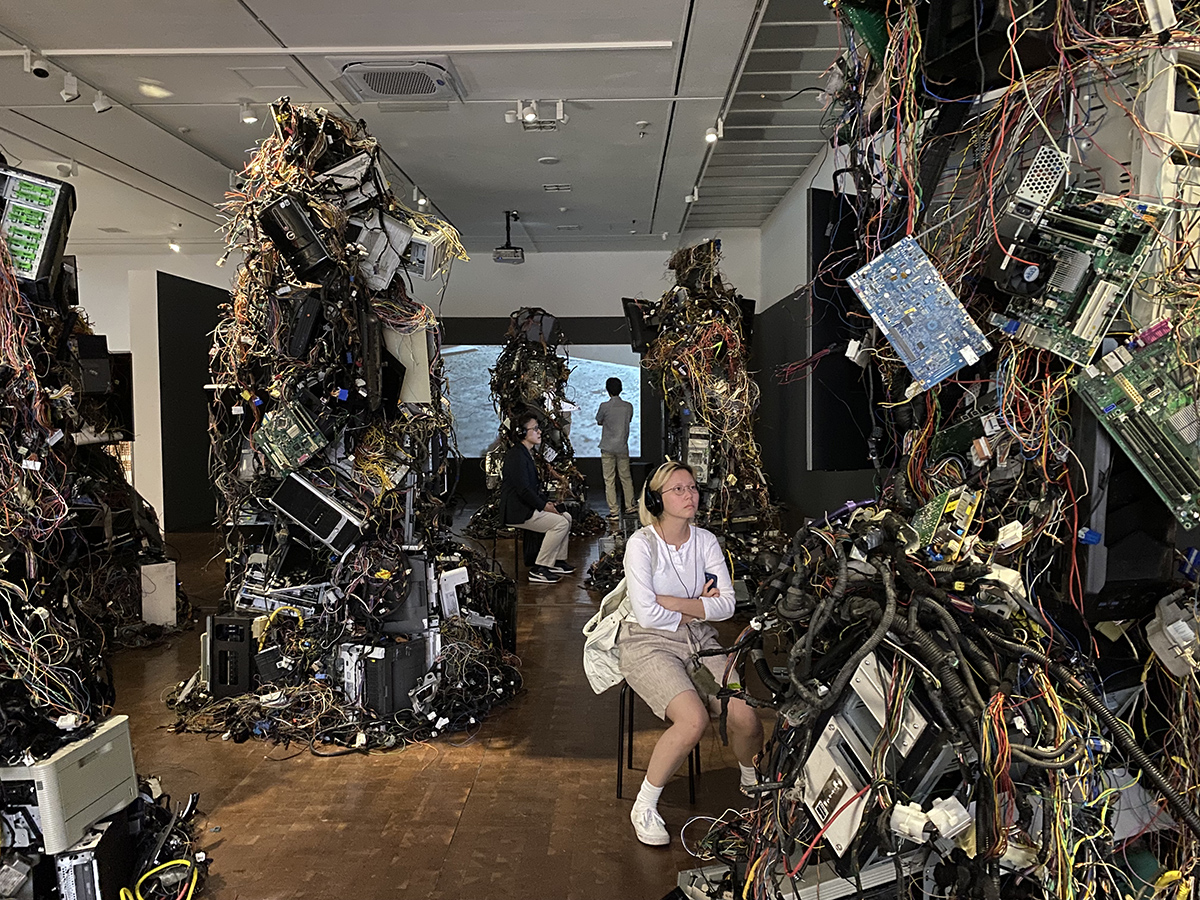
The Seoul Mediacity Biennale has been happening since 1996 with a futurist, technological focus that once distinguished it from Gwangju, the other Korean Biennale which also dates from the biennale boom of the 1990s. Since then, environmental and political crisis, as well as the mainstreaming of new media into contemporary art (and life), has made Mediacity less distinct, less specialised, but still one of a few hundred international events that maintain a circuit of mobile artists and curators. After the first coronavirus years, it seems surreal that this kind of travelling circus could reappear like a brightly lit cruise ship from the ocean’s depths. But the Seoul event has come back with a renewed sense of its relevance to impending global crises.
This iteration of the Seoul Biennale turns to colonialism, communities, extractivism, migration and ‘multisituated alliances’ for its curatorial rhetoric, with international curator Rachael Rakes’ theme, THIS TOO, IS A MAP playing out a Deleuzian postmodern imaginary amidst a city preoccupied by productivity.[1] Long working hours, whether in art institutions or in the industrial plants of Hyundai or Samsung, are part of Seoul’s dystopia, in which Westerners have a reputation for laziness, and U.S. tech entrepreneurs dream of the efficiencies of Korean factories. It’s a place where transnational politics and conspicuous consumption appear particularly relevant, as this megacity plays out the intensities of hyper-capitalism.
Not surprisingly, diasporic labour is the subject of Mercedes Azpilicueta’s Five Spells & A Song I-V (2023), a set of hanging quilts made from deconstructed clothing produced by a Korean textile industry in Buenos Aires. A defining installation within the show, these large and beautiful fabric collages feature glyphs that speak to a universal unconscious of form and shape, bringing forth a soft materialism from the story of Korean migration.
It would seem Korea’s diasporas of the Americas are of renewed interest in a country attempting to decouple itself from an economic dependence on China. Across town, in a show that is not part of the Biennale but makes a useful comparison to Azpilicueta’s work, Jung Yeon-doo’s video opera Imaginary Song (2023) occupies a three-storey basement in the National Museum of Modern and Contemporary Art. Its erhu players and mariachi bands play alongside life-sized fibreglass cactuses to celebrate the history of Korean migration to Mexico in the early 1900s. Unlike Azpilicueta’s subtle tactility, it looks and feels like propaganda for Korea’s economic ties to Mexico, if not transnational capital itself, as Jung turns stories of isolation, hard labour and cruelty into novelty and spectacle.

The New Times Atlas of the World, 2023, custom automatic page flipper, scanner, custom generative system. Installation view, the 12th Seoul Mediacity Biennale THIS TOO, IS A MAP, Seoul Museum of Art, 2023. Photo: Darren Jorgensen
While Azpilicueta’s quilts reach beyond the politics that inspired them, other attempts to map out alternative global flows make for interesting failures. Fellow Argentinian Agustina Woodgate’s installation of a hand erased atlas, The New Times Atlas of the World (2023) ultimately reproduces the European history of Enlightenment, colonialism and mapping which she sets out to deconstruct. A scanner, computer program and projector digitally reconstruct the book’s erased pages on a screen, with an AI reader programmed to decipher the traces of shadowy ink that remain on each page. With all the extravagant labour in this work, the erasure taking a team of eight people over a year, its ‘ungeography lesson’ only resulted in the hazy reappearance of the original, Mercator projection versions of Africa, South America and the oceans.[2] Similarly, Sasha Litvintseva and Beny Wagner’s Constant (2022), a history of bungled technologies of measurement from early modern Europe to the scientific age, represents a return to a European, BBC-style history of the world.
Some of the more successful works in Mediacity look forward rather than back, in alternative futurisms of one kind or another, and with a politics embedded in a post-2022 reimagining of the artworld’s possibilities: after the Indonesian collective ruangrupa’s experience in documenta fifteen (2022), it is no longer possible to argue that biennales lie in a deterritorialised relationship to politics, or that their dependence on institutional structures of power condemns them to mirror the global regimes that finance them. Ruangrupa were pilloried by the German establishment for not gratefully reflecting this power back to those who funded them, and instead championing a utopian, minor politics that simply did not translate into the kind of savvy hierarchies by which Europe consumes its art.[3] Ruangrupa’s clutter of kitchens, skateboard ramps, murals, political paintings and installations challenged a European society obsessed by its own history. Rather than trying to understand the context for illustrations of colonial violence in ruangrupa’s show, German politicians, media and online trolls labelled them and the exhibition more broadly anti-semitic. The furore around documenta fifteen illustrated just how incapable Europe has become of navigating its way through the complexities of an artworld from the Global South built on lateral and anti-authoritarian connectivity.

Included in the Seoul Biennale is a video work with artists from ruangrupa’s home city of Yogyakarta. Gabber Modus Operandi perform a DJ set as a part of Kent Chan’s Warm Fronts (2021), a four channel, vertical video installation in which decks and laptops are laid out in tropical locations across the world.[4] They put their equipment atop an ironing board in a banana plantation, and while smoking cigarettes and wearing outrageous headgear, scream into a microphone atop a chaotic, pumping set of a dark, hyper-pop style of club techno.
The other DJs in Chan’s video installation appear monkish by comparison. Even DJ Makossiri with her Star Wars style cyberpunk braids may as well be perfroming a tourist advertisement for the spectacular Kenyan waterfall she plays in front of, her Euro-club techno straight out of a 3am pilled-up banger. While Chan juxtaposes views of sunrise from the orbiting international space station with these mixers, Makossiri’s set gestures to some brighter terrestrial consciousness. On their own track, Gabber Modus Operandi careen toward a tropical apocalypse, crashing any pretence to a techno-utopian future into the tough truths of a plantation based, heavily industrial dystopian planet.
Another techno-dystopia in the Mediacity Biennale is Francois Knoetze’s installation Core Dump (2018-2019), a cycle of trash-futurist videos set amidst pillars of e-waste. Cyborg dogs and mannequins wander the cities, inciting a robot slave revolution, while Africa represents the ‘messiness and ugliness of the greater globe, migration, extractivism and so on.’[5] Knoetze was inspired by a story from the Congo about car headlights turning people into pigs, in an analogy of both colonialism and the effects of twenty-first century screens, but the impact of the work lies in its overwhelming sense of Afro-futurism as a site for the rebirth of a human race from hybrid, animal-human-machine interfaces. The convergence of Africa with microchip technologies infers a rebirth nobody will recognise, one that appears polluted and distraught, but that holds within it the seeds of capitalism’s destruction.

With sixty-one works, the scale of biennales such as this means the only way to think about their totality is to calculate something of their relevance to the present. If the biennale phenomenon, after Covid and documenta fifteen, has anything to offer, it will be a capacity to materialise a transformed sense of the present. It may be, as Azpilicueta says that:
It is more important how we do things than what we do. The ethics of the work is important to me—nobody is solitary. In my work with collaborators we invest in the long term to support each other. Beyond what we make, it is how we do things. We need a new set of rules. It’s no longer the twentieth century, ethics are important.[6]
It was once possible to say that the expansive nature of biennales and their ambition to include the world within themselves meant that they ultimately said nothing about the world but simply doubled it: today amid seemingly endless looming crises we might now argue that the biennale is positioned to say everything. With the future at stake, the internationalist artworld has no choice but to express the radical hope that comes with any hopeless historical situation. For now, biennales remain the foremost site for this expression.
As contemporary art becomes mediated by Seoul’s younger generation, instagramming themselves at the city’s numerous galleries in a psychic escape from the pressures of an intensive working culture, it may be that global shows like Mediacity offer not just respite but a model of possibilities. If contemporary art is a flawed version of utopia, this is because utopias have always been dystopian for those who live inside them, as artists rely on the institutions, aeroplanes and inequitable labour that make biennales possible.
One of the most humble works in Mediacity holds within it a substantive illumination of the kind of techno-utopianism alluded to in this spread of diasporic, transnational art and artists. Tenzin Phuntsog’s Pure Land (2022) is a cinematic video about a Tibetan family in exile in the U.S., who make video calls to the artist’s grandmother as she is herding yaks across the Himalayan plateau. The artist imagines he is in his ancestral home while he travels across the cold shale landscapes of Montana. ‘At one point I felt close to the sky,’ he says, speaking to his mother on a mobile phone by the roadside, while his grandmother, thousands of kilometres away, tells her exiled children and grandchildren that the pictures they are sending via the satellites in space, ‘ease her heart.’
%20Tenzin%20Phuntsog-Pure%20Land-2022-SeMA-2023.jpg)
Footnotes
- ^ Rachael Rakes, “About SMB12,” in THIS TOO, IS A MAP: A GUIDEBOOK (Seoul: Seoul Museum of Art, 2023), 11.
- ^ Agustina Woodgate, artist talk, Seoul Museum of Art, 21 September 2023.
- ^ See Paris Lettau, “Documenta Fifteen,” MEMO, 16 July 2022, and Ashkan Sepahvand, “Documenta 15 and Anti-racism,” Art Review Oxford (Autumn 2022): 5-9.
- ^ Warm Front’s full DJ sets can be seen here.
- ^ Francois Knoetze, artist talk, Seoul Museum of Art, 21 September 2023.
- ^ Mercedes Azpilicueta, artist talk, Seoul Museum of Art, 21 September 2023.
